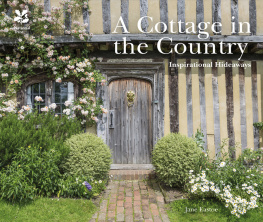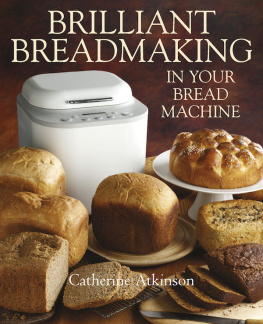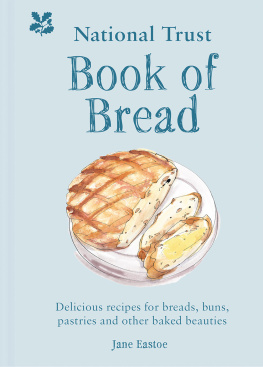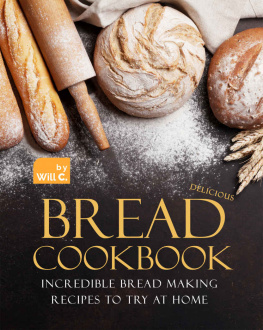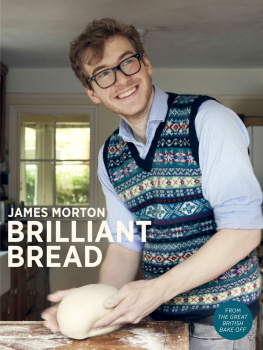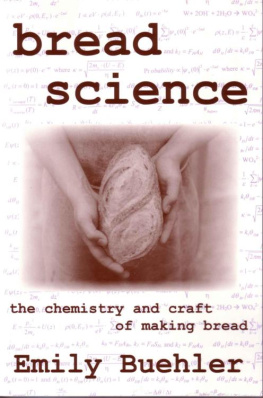MORE GREAT TITLES FROM
NATIONAL TRUST BOOKS
Join our newsletter here
Tap on the titles below to read more
 |  |  |
Home Brewing
Ted Bruning | Home-Grown Fruit
Jane Eastoe | Home-Grown Vegetables
Diana Galligan |
| Available as: | Available as: | Available as: |
| Hardback | Hardback | Hardback |
| eBook | eBook | eBook |

www.pavilionbooks.com
BREAD MAKING
ACKNOWLEDGEMENTS
I am indebted to numerous friends who helped and supported me whilst writing this book, not least the brave souls who sampled innumerable breads and buns, some of which did not make the final cut! Gilly Cubitt, a far better baker than I, has been incredibly helpful, offering words of wisdom, practical advice and plenty of encouragement. Aaron Ogles determinedly sampled everything going, even recipes containing his personal bte noire dried fruit and who now claims to be converted to the charms of the currant, raisin and sultana. I am hugely grateful for his support.
Miranda Lawrence, Ian Laker, Ian Bradford, Sally-Jane Plenge, Julia Legge, Nicole Collison, Rowenna Fenton, Albert Fenton, Matt Harrington, Gareth Dorian, Anne Leva, Lindsay Wrattan, Debbie Philpott, Helen Daw and Lea Tierney all tested various recipes, some good, some less so, and were enthusiastic in their praise, constructive in their criticism and unfailingly patient when the end result did not live up to the outward appearance.
My neighbour and great chum Lynn Linton helped me overcome my fear of deep-fat frying in the quest to produce the perfect doughnut, kindly lent me her mothers precious recipe books and sampled numerous baked goods, including one almighty disaster, for which I apologise profusely.
I must thank my daughter, Florence Eastoe, for her patient proofreading, and my son Teddy for his kind outrage at missing the testing process whilst away at university. My husband, despite pleading gluten intolerance, has manfully sampled everything. He was uncomplaining when I turned the kitchen into a virtual branch of Greggs the bakers in the name of research, and remained tolerant when both wife and house vanished behind a haze of bread flour for many long months.
At the National Trust I have to thank Grant Berry for his help and, the many staff from various properties who so kindly scoured the archives looking for interesting recipes. Had space allowed I would have included many more of them, but in attempting to offer the reader a diverse selection I had to be ruthless in my editing. My apologies if your recipes did not make it, they all produced superb loaves and deserve to be reproduced. At Anova I am continually thankful for the help and support of Polly Powell and my editors Peter Taylor and Cathy Gosling, and eternally grateful for their faith in me, and their patience and kindness.
BREAD MAKING
Jane Eastoe

First published in the United Kingdom in 2014 as Hardback and eBook by
National Trust Books
1 Gower Street
London WC1E 6HD
An imprint of Pavilion Books Company Ltd
Copyright National Trust Books
Text copyright Jane Eastoe
Illustrations by Alan Hancocks
All rights reserved. No part of this publication may be reproduced, stored in a retrieval system, or transmitted in any form or by any means electronic, mechanical, photocopying, recording or otherwise, without the prior written permission of the copyright owner.
eBook ISBN 9781909881242
Hardback ISBN 9781907892783
This book can be ordered direct from the publisher at
www.pavilionbooks.com, or try your local bookshop.
Also available at National Trust shops.
Reasonable care has been taken to ensure the accuracy of the recipes and instructions in this book. However, any liability for inaccuracies or errors relating to the material contained within the book is expressly excluded to the fullest extent permitted by law.
You may not always achieve the desired results. Oven temperatures vary between different appliances and different equipment may affect the desired outcome. Neither the National Trust, National Trust (Enterprises) Ltd nor Pavilion Books Company Ltd accept any responsibility or liability for the end results of the recipes featured in this book.
Warning: recipes containing raw eggs are unsuitable for pregnant women or young children.
CONTENTS
INTRODUCTION
W e all appreciate the charms of a floury artisan loaf warm from the oven, a baguette fresh from a French bakery, a saffron bun purchased from a farmers market in Cornwall, or the fantastic flavours of a dense wholemeal leaf made by a friend at home. Bread, although a dietary staple, is one of the worlds great gourmet foods, and whilst the convenience of the shop-bought, plastic-wrapped loaf cannot be denied, it bears very little resemblance to the charms of bread made by hand.
There is an apparent mystique to bread making that deters many people from having a stab at it, even though they would not think twice about knocking up a delicate souffl, stuffing and roasting a goose, or using a blowtorch to caramelise the sugar on top of a crme brle. But bread making is no more complex than any of the culinary arts; indeed, the method is so simple that a child can knock up a loaf with ease.
Bread making appeals to very base instincts! Making a loaf is an intensely satisfying physical experience; turning a sticky mass of flour, water and yeast into a silky piece of dough, with a life of its own, is positively sensual. Seeing a piece of dough grow to twice its size never fails to thrill. And the smell of fresh baked bread alone is so positively intoxicating that estate agents maintain it can tip the balance in house purchases.
It is easy to become nostalgic about the lost art of bread making, to have visions of our ancestors kneading dough at the farmhouse table through a hazy, soft-focus cloud of flour. The truth is not so picturesque, for whilst bread has been integral to our survival it has been a staple since the Stone Age making it ourselves has not always been possible. Growing the grain to make flour, grinding it by hand, or taking it to the miller to be ground, is hard graft. Kneading bread at home may have been part of the daily routine, but often it was taken to a central oven to be baked as most people did not have the luxury of owning an oven in their home. Indeed, we have been dependent on bakers as far back as the early Egyptians and the Romans.
What has changed is that bread is no longer made locally, by skilled individuals using the same basic systems and ingredients as our forebears, to create fantastic, nutritious and tasty loaves. Mass production processes, introduced in the 1950s, intrinsically changed the nature of our daily bread. In Britain, we consume around 12 million loaves a day. Some 80 per cent of sales are made from the pre-packed loaves produced by large bakeries; in-store bakeries account for 17 per cent of sales, while just three per cent are taken by small high street bakers.
But the good news is that we are better equipped today to make delicious bread at home than ever before in history. The mass of bread-making flours for sale in the supermarkets are far superior to anything our forebears used. Heritage flours, made from blends of old varieties of wheat, can be purchased from mills, specialist suppliers and over the internet. Many watermills and windmills are being restored to grind flour again. The National Trust is doing so in many places, from Cotehele in Cornwall to Hardwick in Derbyshire, often so they can grind home-grown wheat and bake on site or sell flour locally. Regional flour from all over the world can be bought locally, allowing us to make our own authentic versions of a range of foreign breads. Water comes out of the tap and we all have ovens in which to bake. Yeast is readily available, both fresh and dried, or we can make our own wild yeast from sourdough starters at home.
Next page

